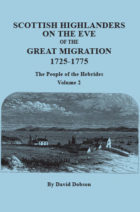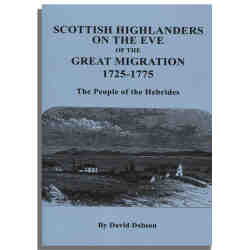The Hebrides are those islands lying off the coast of the Western Highlands of Scotland. They form parts of the counties of Ross and Cromarty, Inverness, and Argyll, and contain thirty-six parishes. During the Seven Years War, 1756 to 1763, Hebrideans comprised part of the Highland regiments raised to fight in America, namely Fraser’s Highlanders and Montgomery’s Highlanders. They and the Black Watch played a significant role in the campaigns and afterwards many former soldiers chose to settle in the former French Canada and in America rather than return to Scotland. These military settlers with their friends and families formed a substantial portion of the Highlanders who settled in the years before the outbreak of the America Revolution in 1776.
Genealogical research in this region can be challenging because the parish registers, which are the backbone of Scottish genealogical research, only exist for about a quarter of the Hebridean parishes before 1800—and then only for Presbyterian ones. Such alternative sources as do exist include court records, estate papers, wills and testaments, services of heirs, registers of sasines, registers of deeds, port books, rent rolls, tax records, monumental inscriptions, and published works–on both sides of the Atlantic—and they comprise the basis for Dr. David Dobson’s second volume of Hebridean source records. In all of the roughly 1,500 completely new entries for Volume 2, Dobson identifies a Hebridean by name, location, occupation, date, and source. In many instances the records also indicate an individual’s kinsmen, intention to emigrate, military service, and other valuable characteristics. Since Celtic was still spoken in the Hebrides in the 18th century, researchers will find evidence of this in the surnames and place names that arise in the entries.



